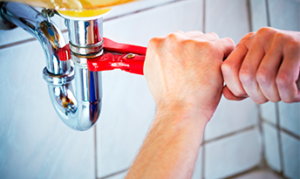Plumber Montgomery TX installs, repairs, and maintains pipes and fixtures associated with heating and cooling in a home or other building. They can also interpret blueprints and building specifications and do work requiring soldering, brazing, welding, and/or rigging.

Residential plumbing issues are more accessible to diagnose and solve, as homeowners tend to use plumbing systems more regularly and will notice small leaks or problems sooner.
The plumbing system in a house is a network of pipes that distributes water to appliances like sinks, toilets and showers, while also removing wastewater. It is critical for our health and hygiene, yet it is often overlooked because of its behind-the-wall structure. A professional plumber can accurately install this system to ensure that your household has access to clean and sufficient water for use in cooking, washing and cleaning.
Plumbing systems are complex, with multiple subsystems including water supply pipes, drain pipes and sewer lines. Each pipe works independently and has its own function to play in the overall plumbing infrastructure of a home. Depending on the type of house and its location, some components of a plumbing system may be different from others. For example, houses with wells may have different piping structures than those that connect to public water and sewer systems.
Residential plumbing pipes are typically made from durable materials that can handle high volumes of pressure and varying temperatures. Copper pipes, for instance, are a popular choice because they can last up to 50 years without corroding. Another common option is PVC (polyvinyl chloride) pipes, which are flexible, easy to work with and can withstand different types of water temperatures. These pipes can even be used in outdoor applications. For homes that previously had polybutylene piping, a plumber can replace these with the more durable PEX (cross-linked polyethylene) pipes.
Other durable and effective piping materials include galvanized iron and cast iron. These are less expensive than copper and can still provide a long lifespan, though they may have potential problems with corrosion over time. Galvanized pipes tend to be narrower than other pipes, which can decrease the amount of water they are able to transport.
When it comes to a home’s drainage system, it is important to keep in mind the size of the septic tank and how that will affect sewage flow and disposal. A good plumber will be able to help you choose the right septic tank size based on the number of bathrooms in your home and the size of each toilet.
If you are building a new house, it’s a good idea to get the plumbing system installed before starting any interior decoration. This way, you’ll be able to move into the house with all the plumbing and electrical wiring in place, which will make your relocation easier on yourself and your family. It will also be more cost-effective to do this than to have the entire project reworked later on. A plumber can give you valuable insights into whether a classic or modern plumbing system is best for your home. Each has its own advantages and disadvantages, so it is important to weigh these pros and cons carefully before making your decision.
Classic Residential Plumbing
Having an efficient, functional plumbing system is one of the basic necessities in any home. However, homeowners often face a dilemma when choosing between time-tested traditional methods and cutting-edge solutions that cater to modern needs. It’s important to consider the pros and cons of each method, and consult with professional plumbers for expert guidance.
Classic residential plumbing offers advantages like reliability, cost-effectiveness, and the expertise of experienced professionals. On the other hand, it may have drawbacks including potential leaks, limited efficiency compared to newer alternatives, and higher maintenance requirements.
Unlike modern systems, classic residential plumbing is composed of metal pipes that are more prone to corrosion and can lead to issues such as leaks and clogs. This is why it’s important to regularly check and replace old components to avoid further problems.
In addition, classic plumbing systems typically use lead pipes or solder, which can pose health risks especially for children and babies. It’s recommended to have your home’s water tested for lead if you’re using classic plumbing, as a simple repair can significantly reduce the risk of health concerns.
On the other hand, modern plumbing systems offer a wide range of advantages including high efficiency, sustainability, and flexibility. They also tend to be more durable and easier to install compared to classic systems. However, these systems can be more expensive than their classic counterparts, and their energy efficiency isn’t always as good as the older systems.
Both systems have their merits, and the choice ultimately depends on your specific home’s requirements, budget, and priorities. A reliable plumber can assess your needs and recommend the right solution that will provide long-term benefits for your family.
The cost of replacing your pipes will vary depending on the size and age of your house, as well as how complex the installation process will be. For example, if you have galvanized pipes in your house, the installation will be more complicated than installing a newer pipe type, such as PEX or copper. Another factor that will influence the cost is the material used for the replacements. For example, copper is more expensive than PVC, but it’s an excellent choice for high-pressure situations and is unlikely to leak.
Advantages
A residential plumber can help with many common issues that occur in the home, including clogged drains, toilets that don’t flush, and signs of water damage in the walls or ceiling. They can also offer bundled services that include inspections and maintenance of the entire plumbing setup, helping homeowners save money by fixing issues before they become worse.
Unlike commercial plumbers, residential plumbers usually communicate with the property owner directly rather than a manager or tenant. This allows them to work faster and make decisions more efficiently. They may still need to get approval from a higher-ranking member if the budget for a project is high, though.

